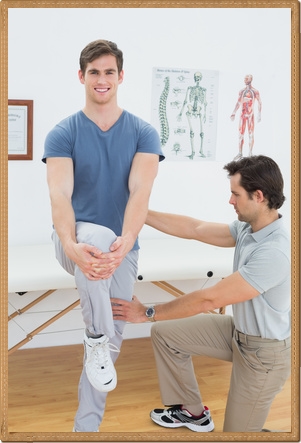Exercise Goes a Long Way...
 Exercise Therapy
Exercise Therapy
Exercise is the primary treatment for patients with foot drop. Strengthening exercises of the muscles within the foot and the lower limbs help maintain muscle tone. Such exercises will help strengthen and stretch the foot while returning mobility to the ankle.
Stretching exercises are an excellent treatment for foot drop. Physical therapists will advise patients to sit on the floor, place a towel around the foot, hold onto both ends and gently pull the towel towards them. This helps stretch the muscles of the calf and foot.
Other exercises include leg flexes and toe curls. Several sets and repetitions are required to stimulate the muscles sufficiently.
Electrical Stimulation
In some patients with foot drop, physical therapists may advise a treatment regime that includes electrical stimulations of the nerves and muscle fibers. This helps generate electrical impulses within the muscles and can, to an extent, help increase the tone and the contractility.
Gait Training
Gait signifies the way a person walks. A gait abnormality is a deviation from normal walking.
Gait training is recommended for those patients with significant gait problems. This treatment helps a patient walk more efficiently and improve stability by incorporating different strength and balance exercises.
At times, gait training requires the use of walkers, canes and parallel bars to safeguard the patient.
A gait belt is an assistive device used to help a patient maintain balance during training.
Braces and Splints
For individuals with limited control over their foot muscles, an "Ankle-Foot-Orthosis (AFO)" is used to help improve gait. AFO are L-shaped braces designed to support the function of the ankle and foot by keeping them perpendicular (at an angle of 90 degrees). This helps to keep the foot off of the ground while walking.